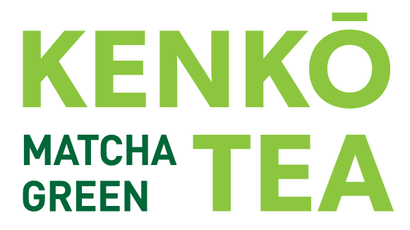
What is the best matcha tea to buy?
Kenko Tea sells matcha green tea in two grades - Ceremonial Matcha and Culinary (or Cooking) Grade.
There are a few differences between the two, but first - a brief intro to matcha:
All ‘real’ matcha green tea powders have the following traits:
- A form of tea leaves from the camellia sinensis plant.
- The tea plants are covered in shade for the last month of their production. This stops sunlight from getting to the plants, and causes high levels of chlorophyll, amino acids and antioxidants (particularly EGCG’s) to be produced.
- Stone ground on granite blocks. To create matcha’s fine texture and unique molecular structure, hand carved granite blocks are used to mill the dried tea leaves into matcha powder.
- The whole tea leaf is ingested. Unlike other teas that are steeped in hot water, with matcha you consume the whole tea leaf - so you get incredible amounts of antioxidants.
- Produced in Japan, namely in either the Kyoto or Nishio regions.

(Note - A lot of cheap ‘green tea powders’ are sold as matcha. These powders are often dull green, lack aroma and taste very bitter. While all matcha is a form of green tea powder, not all green tea powders are a true ‘matcha’. Real matcha should have all these steps, shading, hand picking, stone grinding)
Cooking with Matcha?
If you plan to be making matcha smoothies, green tea lattes or desserts with matcha - then the Cooking Grade is better suited. It’s more economical and has a stronger flavor that pairs well with sugars, fats and other flavors.
Matcha as a Tea
If you plan to drink matcha as a tea just with water, then the Ceremonial Grade matcha would suit you better. It has a slightly sweeter, delicate flavor profile, very slight astringency and whisks to produce a lovely crema, similar to an espresso coffee. It’s also visibly bright greener - like an intense jade green.

(Kenko Ceremonial Matcha Green Tea Color)
Many people are surprised just how green high grade matcha is - it has to be seen first hand. This grade of matcha is typically reserved for Japanese tea ceremony, and is the best matcha we sell. It’s best when prepared with a traditional bamboo whisk (chasen) and scoop (chasaku).

(Whisking matcha with a bamboo Chasen)
Where is the best matcha produced?
All Kenko Matcha is produced in the Nishio Region in southern Japan, and come from the same tea farms. The leaves are harvested once a year in the spring, and stored as dried tencha leaves before being stone ground only to order. Any matcha you purchase from Kenko Tea has only been processed into matcha powder within the last month. This ensures freshness, vibrance and the intense green color and ‘green tea’ aroma that a quality matcha should have.

The main difference between Kenko Cooking Grade and Kenko Premium Grade is in the leaf selection, and blending.
All matchas are ‘blends’, that is leaves are harvested, graded and sorted according to their individual color, aroma and flavor profiles. One batch of matcha may have leaves from a few different farms within a region. So unlike a single origin coffee where each batch can be traced to a particular farm - matcha powdered green tea is always a blend.
The youngest, greenest leaves found at the top of the tea plants are reserved for the higher grades of matcha. While the leaves at the base of the plants are reserved especially for the cooking grades. This isn’t to say cooking grade is lower in quality, the same care is taken in every aspect of production. From the shading of the tea leaves, the harvesting by hand to the drying of the tea leaves and blending.

(grinding matcha tea on stone mills)
Culinary or cooking grade is blended especially for mixing, blending, baking and adding to sweets. With a bolder flavor, slightly more astringency and stronger ‘green tea’ flavor that combines with other ingredients.

(Kenko Culinary Grade Matcha Tea)
Price Difference
The difference in price between the two grades is mainly due to the stricter requirements for premium grades of matcha. As only the youngest, most delicate leaves are used, the supply is more limited and this affects the price. Also one thing to keep in mind is 90% of matcha produced in Japan is consumed within Japan, so what’s left for export is in high demand and short supply - further increasing the cost.
Where to Start?
Well if you are keen to try matcha the traditional Japanese way, I'd recommend checking out how we make matcha at Kenko Tea.
On the other hand if green tea smoothies and green tea latte's are more your style - then start with the culinary-grade.
Although you can always try both ;)







